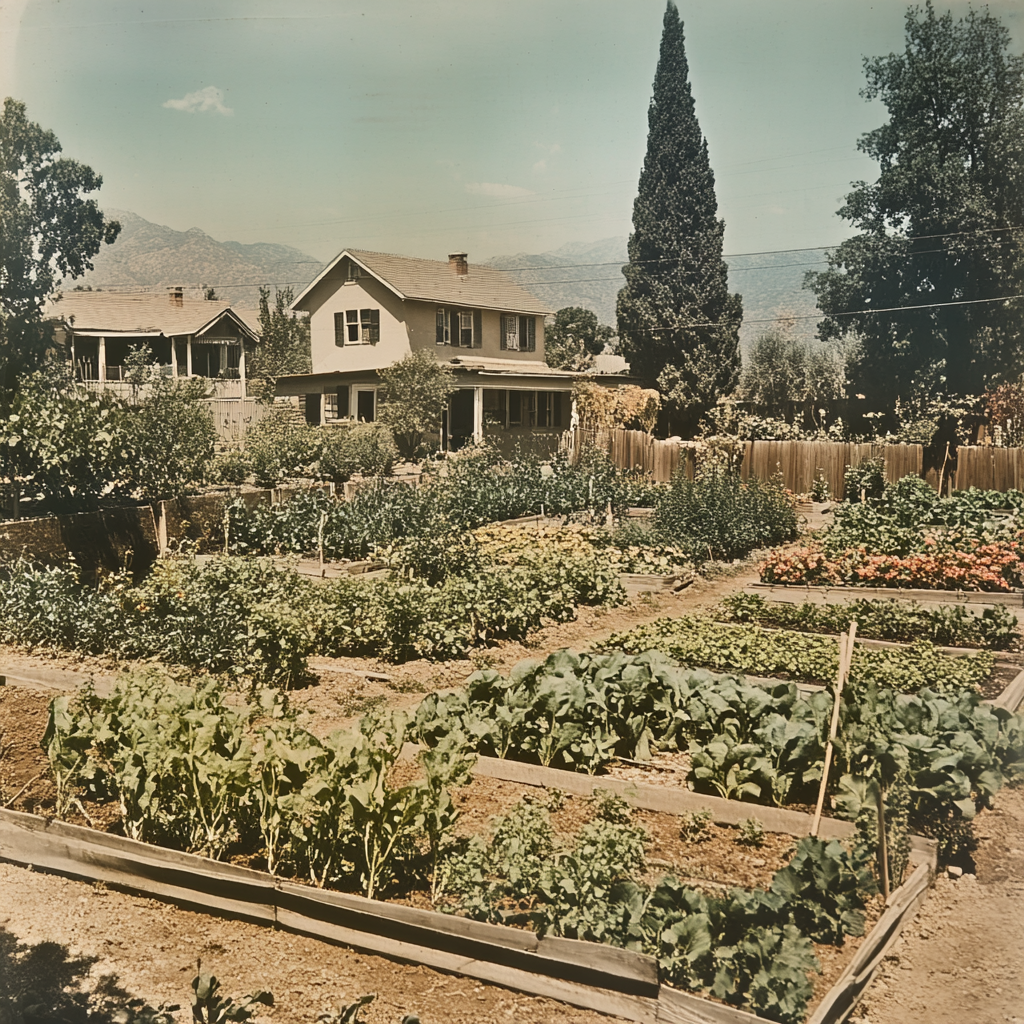In times of uncertainty, growing your own food has always been a powerful act of self-reliance. Did you know that during World War II, over 20 million Americans grew their own food, producing nearly 40% of the nation’s vegetables? Victory gardens, rooted in unity and resourcefulness, offer timeless lessons in sustainability and community. Let’s explore their inspiring history and how you can plant a thriving victory garden today.
A Brief History of Victory Gardens
Wartime Roots
Victory gardens first emerged during World War I (1914–1918) as European nations faced severe food shortages. The idea gained momentum in the U.S. during World War II, rebranded as “victory gardens” to inspire patriotism and food security. With farms stretched thin feeding troops, the government urged citizens to grow their own produce. Even First Lady Eleanor Roosevelt planted a symbolic garden on the White House lawn, demonstrating the importance of self-sufficiency.

A National Effort
By 1943, 20 million victory gardens flourished across America, producing nearly 40% of the nation’s fresh vegetables. Posters, radio shows, and community workshops turned gardening into a shared mission. Schools, parks, and rooftops transformed into fertile plots, fostering camaraderie and boosting morale.
Legacy of Resilience
After the war, victory gardens faded as supermarkets and processed foods became more popular. Yet their spirit endured. Today, they’re embraced by home gardeners seeking fresh, hyper-local food, self-sufficiency, and a deeper connection to the earth. With rising food costs and growing interest in sustainability, victory gardens are making a comeback!
How to Plant Your Own Victory Garden

Whether you have acres of land or just a balcony, here’s how to grow a thriving garden that honors tradition while nourishing your household.
1. Choose Your Space
- Sunlight: Aim for 6–8 hours of direct sun daily.
- Soil: Test your soil’s pH (6.0–7.0 is ideal). No ground? Use pots, raised beds, or vertical planters.
2. Pick Prolific Plants
Focus on easy-to-grow, high-yield crops suited to your climate:
Leafy Greens: Lettuce, spinach, kale, Swiss chard, arugula
Root Vegetables: Carrots, radishes, beets, turnips, potatoes
Legumes: Bush beans, pole beans, peas (great for vertical growth!)
Fruiting Plants: Tomatoes, peppers, zucchini, cucumbers, strawberries
Herbs: Basil, parsley, cilantro, rosemary, thyme (great for pest control and flavor)
Compact Crops: Green onions, garlic, dwarf varieties of squash or eggplant
3. Plan Your Layout
- Companion Planting:
- Tomatoes + basil (enhances flavor, repels pests)
- Carrots + onions (deters carrot flies)
- Marigolds + any vegetable (controls nematodes)
- Succession Planting: Rotate crops by replacing harvested plants with fast-growers like radishes or lettuce.
4. Prep and Plant
- Enrich Soil: Mix in compost or worm castings.
- Timing: Follow local frost dates. Plant cool-weather crops (peas, spinach) in early spring; warm-weather crops (tomatoes, peppers) after frost.
- Seed vs. Starter: Beginners can opt for seedlings (tomatoes, peppers) for faster results.
5. Maintain with Care
- Water: Deeply 1–2 times weekly; avoid wetting leaves to prevent disease.
- Mulch: Use straw or shredded leaves to retain moisture and suppress weeds.
- Natural Pest Control:
- Handpick caterpillars or use diatomaceous earth for slugs.
- Attract ladybugs and lacewings with flowering herbs like dill or fennel.
6. Harvest and Preserve
- Pick Often: Regular harvesting encourages more growth (e.g., zucchini, beans).
- Store Surplus: Freeze herbs in oil, dry tomatoes, or ferment cabbage into sauerkraut.
- Share the Bounty: Donate extras to neighbors or food banks.
From Garden to Table: Victory Soups
One of the most cherished traditions of victory gardening was turning humble harvests into nourishing meals. During wartime, cooks relied on victory soups—simple, hearty dishes made from garden-fresh veggies, herbs, and pantry staples. These soups minimized waste, stretched ingredients, and provided comfort during tough times.
A Typical Victory Soup Might Include:
- Root Vegetables: Carrots, potatoes, or beets for depth.
- Leafy Greens: Kale, spinach, or cabbage for freshness.
- Aromatics: Onions, garlic, or herbs like thyme and parsley.
- Broth: Homemade stock or water, thickened with beans or barley.
For a modern twist, try my hearty victory soup recipe—a flexible, seasonal dish that celebrates garden bounty. Toss in whatever you’ve harvested, simmer with spices, and enjoy a taste of history in every spoonful! 🍲
Why Victory Gardens Still Matter
Victory gardens are more than a historical footnote—they’re a celebration of ingenuity, sustainability, and community. They help reduce reliance on long supply chains, teach valuable skills, and turn empty spaces into thriving ecosystems. By planting one, you join a legacy of growers who transformed scarcity into abundance.
Ready to Begin?
Start small, experiment, and let your garden become a source of pride, fresh meals, and resilience!
Frequently Asked Questions (FAQ)
What were victory gardens?
Victory gardens were home gardens encouraged during wartime to supplement food shortages and boost morale.
Can I start a victory garden in an apartment?
Yes! Use containers, window boxes, and vertical planters to grow herbs, greens, and compact vegetables.
What are the best plants for a beginner?
Leafy greens (lettuce, spinach), tomatoes, bush beans, radishes, and herbs (basil, parsley) are great beginner-friendly crops.
How do I keep pests away naturally?
Use companion planting, encourage beneficial insects, and apply organic deterrents like neem oil or diatomaceous earth.
Want More Gardening Tips?
Check out our other articles on The Best Flowers for a Vibrant Garden! 🌱✨

